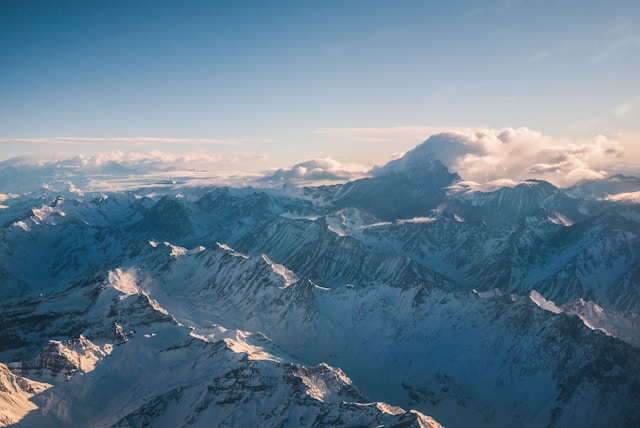For adventurers seeking the pinnacle of mountaineering achievement, climbing the 7 Summits is the ultimate test of endurance, skill, and determination. These towering peaks stand as the highest points on each of the seven continents, each offering its unique challenges and breathtaking beauty. Let’s explore these magnificent mountains:
1. Mount Everest (Asia)
Height: 8,848 meters (29,029 feet)
Location: Nepal/China (Tibet) Mount Everest, the “Roof of the World,” needs no introduction. As the highest mountain on Earth, it attracts climbers from around the globe. The journey to its summit is fraught with danger, including extreme weather, high altitudes, and the notorious Khumbu Icefall. Yet, standing atop Everest offers an unparalleled sense of accomplishment and a view like no other.
2. Aconcagua (South America)
Height: 6,959 meters (22,831 feet)
Location: Argentina Aconcagua, the highest peak in the Western Hemisphere, is a dominant feature of the Andes mountain range. While technically less demanding than Everest, its sheer height and unpredictable weather make it a formidable challenge. The climb is often attempted from the Normal Route, but the Polish Glacier Route offers a more technical ascent.
3. Denali (North America)
Height: 6,190 meters (20,310 feet)
Location: Alaska, USA Denali, formerly known as Mount McKinley, is the tallest peak in North America. Its remote location and extreme weather conditions make it a daunting climb. The West Buttress Route is the most popular path to the summit, but climbers must be prepared for crevasses, icefalls, and rapidly changing weather.
4. Kilimanjaro (Africa)
Height: 5,895 meters (19,341 feet)
Location: Tanzania Mount Kilimanjaro is the highest free-standing mountain in the world and a symbol of Africa. Unlike the technical climbs of other Seven Summits, Kilimanjaro is a trek that requires physical endurance and mental fortitude. The Marangu, Machame, and Lemosho routes are popular choices, each offering a unique experience through diverse ecosystems.
5. Mount Elbrus (Europe)
Height: 5,642 meters (18,510 feet)
Location: Russia Mount Elbrus, Europe’s highest peak, is part of the Caucasus mountain range. While not as technically challenging as some other summits, it requires climbers to be well-acclimated to high altitudes. The climb is typically undertaken from the south side, with the ascent often assisted by snowcats to the high camp.
6. Vinson Massif (Antarctica)
Height: 4,892 meters (16,050 feet)
Location: Antarctica Vinson Massif is the highest peak in Antarctica, located in the remote Ellsworth Mountains. The extreme cold and isolation make this climb uniquely challenging. Climbers must be self-sufficient and prepared for harsh conditions. Despite the difficulties, the stark beauty of the icy landscape is a reward like no other.
7. Puncak Jaya (Oceania)
Height: 4,884 meters (16,024 feet)
Location: Papua Province, Indonesia Also known as Carstensz Pyramid, Puncak Jaya is the highest peak in Oceania. The climb involves rock scrambling and technical rock climbing, making it a distinct departure from the snow and ice of other summits. The journey to the base of the mountain through dense jungle adds to the adventure.
Conclusion
Climbing the 7 Summits is more than a physical feat; it’s a journey that tests the human spirit, resilience, and passion for exploration. Whether you dream of standing atop these giants or simply admire the stories of those who have, the Seven Summits remain a testament to the enduring allure of the world’s highest peaks.

